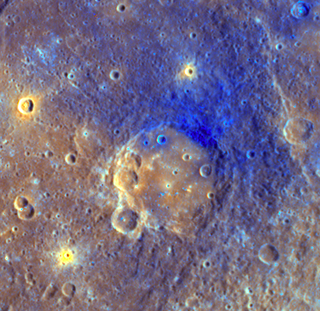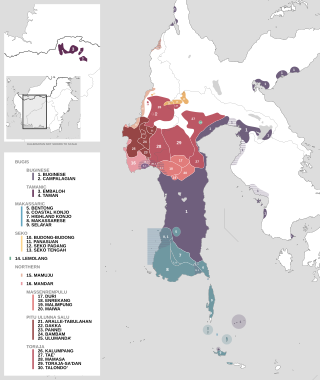Related Research Articles
Estuary English is an English accent, continuum of accents, or continuum of accent features associated with the area along the River Thames and its estuary, including London, since the late 20th century. Phonetician John C. Wells proposed a definition of Estuary English as "Standard English spoken with the accent of the southeast of England". He views Estuary English as an emerging standard accent of England, while also acknowledging that it is a social construct rather than a technically well-defined linguistic phenomenon. He describes it as "intermediate" between the 20th-century higher-class non-regional standard accent, Received Pronunciation (RP), and the 20th-century lower-class local London accent, Cockney. There is much debate among linguists as to where Cockney and RP end and where Estuary English begins, or whether Estuary English is even a single cohesive accent.

Marshallese, also known as Ebon, is a Micronesian language spoken in the Marshall Islands. The language of the Marshallese people, it is spoken by nearly all of the country's population of 59,000, making it the principal language. There are also roughly 27,000 Marshallese citizens residing in the United States, nearly all of whom speak Marshallese, as well as residents in other countries such as Nauru and Kiribati.

Osage is a Siouan language that is spoken by the Osage people of the U.S. state of Oklahoma. Their original territory was in present-day Missouri and Kansas but they were gradually pushed west by European-American pressure and treaties.
English phonology is the system of speech sounds used in spoken English. Like many other languages, English has wide variation in pronunciation, both historically and from dialect to dialect. In general, however, the regional dialects of English share a largely similar phonological system. Among other things, most dialects have vowel reduction in unstressed syllables and a complex set of phonological features that distinguish fortis and lenis consonants.

Rotuman, also referred to as Rotunan, Rutuman or Fäeag Rotuạm, is an Austronesian language spoken by the Indigenous Rotuma people in the South Pacific. Linguistically, as well as culturally, Rotuma has had Polynesian-influence culture and was incorporated as a dependency into the Colony of Fiji in 1881. Contemporary Rotuman is a result of significant Polynesian borrowing, following Samoan and Tongan migrations into Rotuma.
Victoria is a suburb of Johannesburg, South Africa. It is located in Region E of the City of Johannesburg Metropolitan Municipality. It is a small suburb located north-east of the city centre surrounded by Norwood to its north, the Houghton Estate to its west and south, while Orange Grove lies to the east.
Xamtanga is a Central Cushitic language spoken in Ethiopia by the Xamir people.
Lamogai is an Austronesian language spoken by about 3600 individuals in parts of West New Britain Province, Papua New Guinea on the island of New Britain.
Mouk-Aria is an Austronesian language spoken by about 600 individuals along coastal West New Britain Province, Papua New Guinea on the island of New Britain.
Unlike many languages, Icelandic has only very minor dialectal differences in sounds. The language has both monophthongs and diphthongs, and many consonants can be voiced or unvoiced.
The 1912 New York Highlanders season was the team's tenth. It was the final season for the "Highlanders" nickname, before officially adopting the already more common "Yankees" name. It was also their final season playing their home games at Hilltop Park. The team finished with a total of 50 wins and 102 losses, coming in 8th, last place in the American League. The club was managed by Harry Wolverton. The New York franchise would not finish in last place again until the 1966 season. To date, this remains the second and last 100-loss season in Yankees history, the other being a few years prior in 1908. After previously appearing on the team's caps, jackets, and even the sleeves of the uniform, this was the first season that the famous "NY" logo would appear on the front of the jerseys.

The 1902 Philadelphia Athletics season was a season in American baseball. The team finished first in the American League with a record of 83 wins and 53 losses.
The Tikopia language is a Polynesian Outlier language from the island of Tikopia in the Solomon Islands. It is closely related to the Anuta language of the neighboring island of Anuta. Tikopian is also spoken by the Polynesian minority on Vanikoro, who long ago migrated from Tikopia.
Ndrumbea, variously spelled Dumbea, Ndumbea, Dubea, Drubea and Païta, is a New Caledonian language that gave its name to the capital of New Caledonia, Nouméa, and the neighboring town of Dumbéa. It has been displaced to villages outside the capital, with fewer than a thousand speakers remaining. Gordon (1995) estimates that there may only be two or three hundred. The Dubea are the people; the language has been called Naa Dubea "language of Dubea".

Titian is an impact crater on the planet Mercury. It was named by the IAU in 1976.
Wahgi is a Trans–New Guinea language of the Chimbu–Wahgi branch spoken by approximately 100,000 people in the highlands of Papua New Guinea. Like other Chimbu languages, Wahgi has some unusual lateral consonants.
Sikaritai (Sikwari) is a Lakes Plain language of Papua, Indonesia. It is named after Sikari village in Rafaer District, Mamberamo Raya Regency. Alternate names are Aikwakai, Araikurioko, Ati, Tori, Tori Aikwakai.
The phonology of Faroese has an inventory similar to the closely related Icelandic language, but markedly different processes differentiate the two. Similarities include an aspiration contrast in stop consonants, the retention of front rounded vowels and vowel quality changes instead of vowel length distinctions.

Coastal Konjo is an Austronesian language of Sulawesi, Indonesia, which belongs to the Makassaric branch of the South Sulawesi subgroup. It is spoken along the coast in the southeastern corner of South Sulawesi in the regencies of Sinjai, Bulukumba and Bantaeng. It is closely related to, but distinct from Highland Konjo, which also belongs to the Makassaric languages.